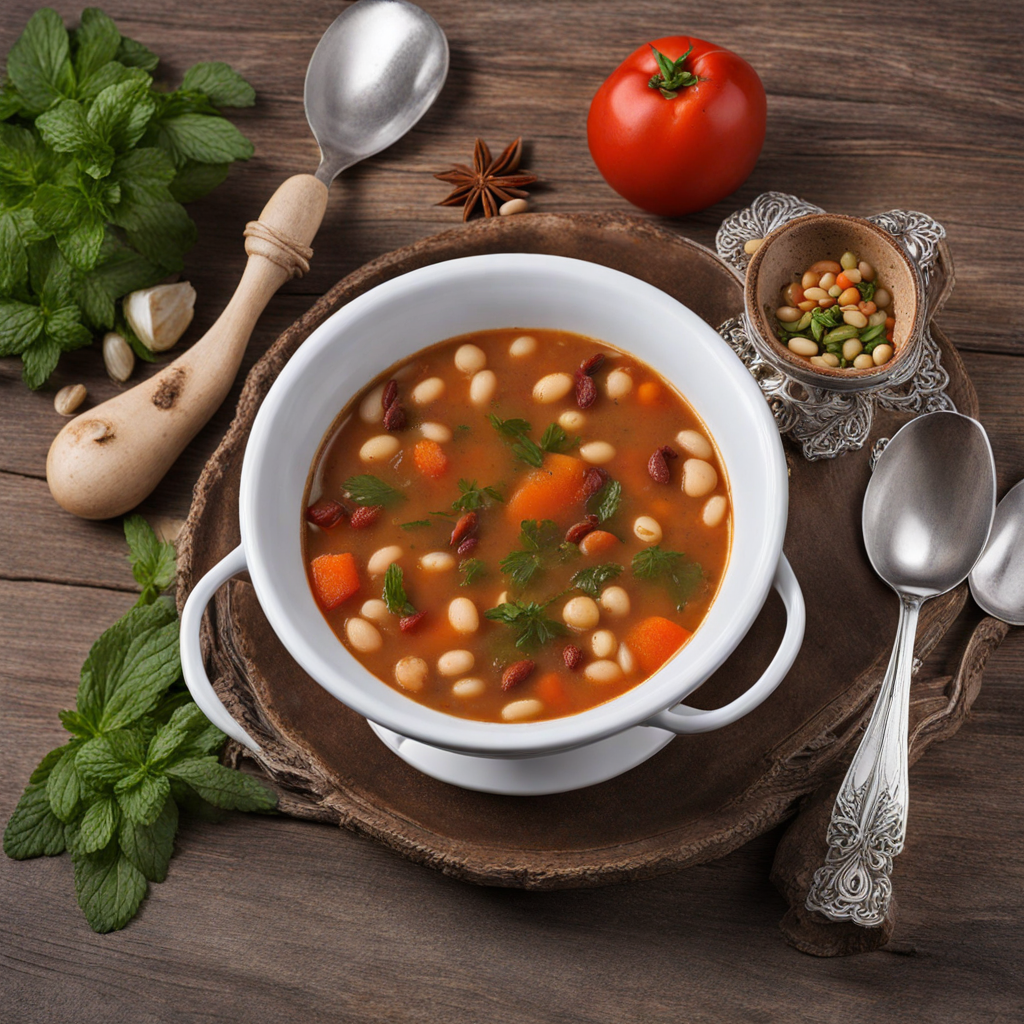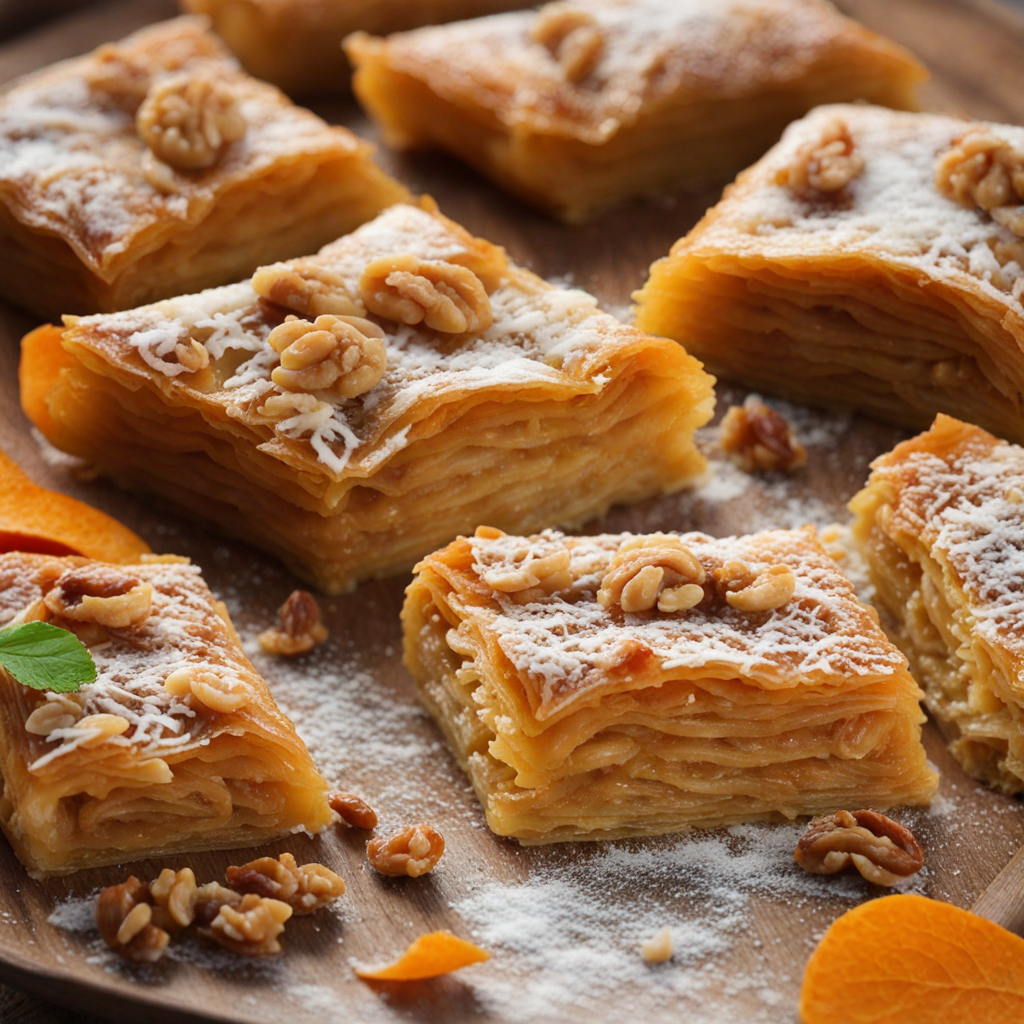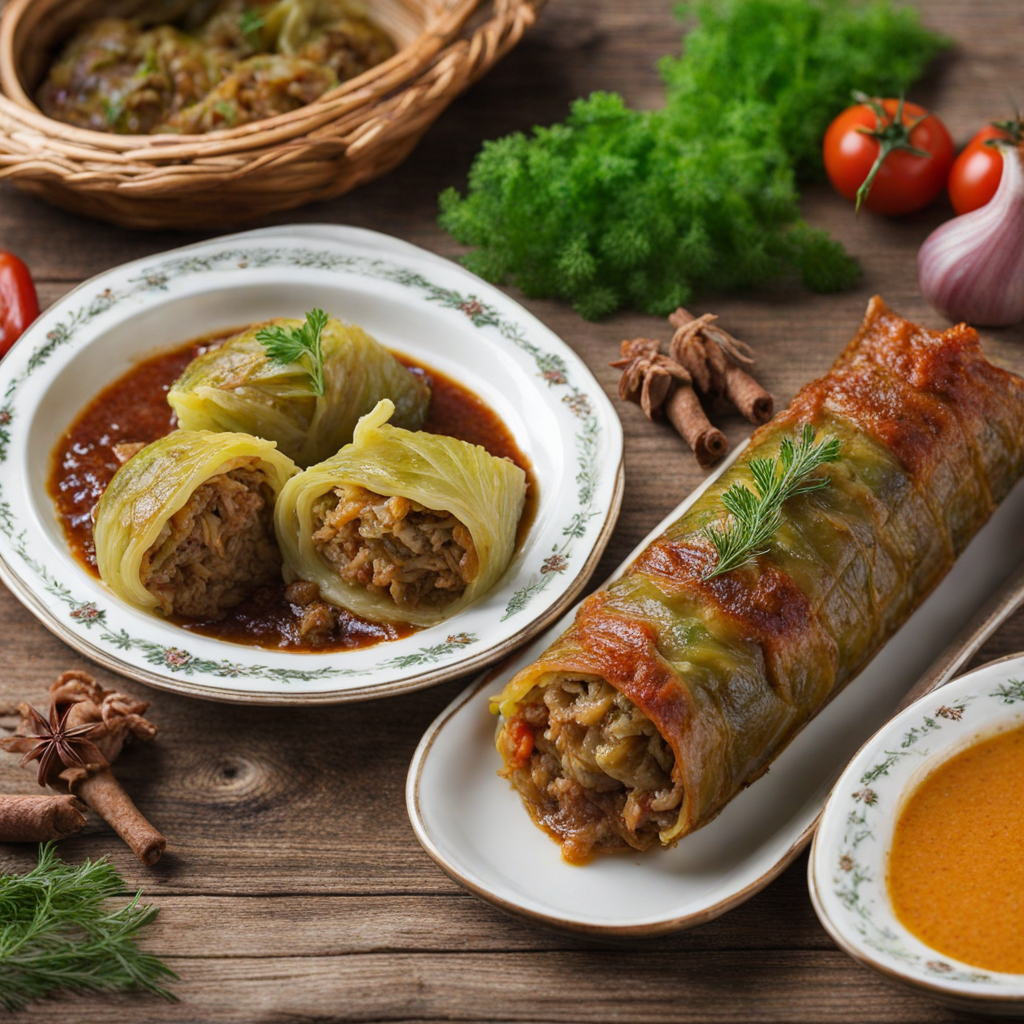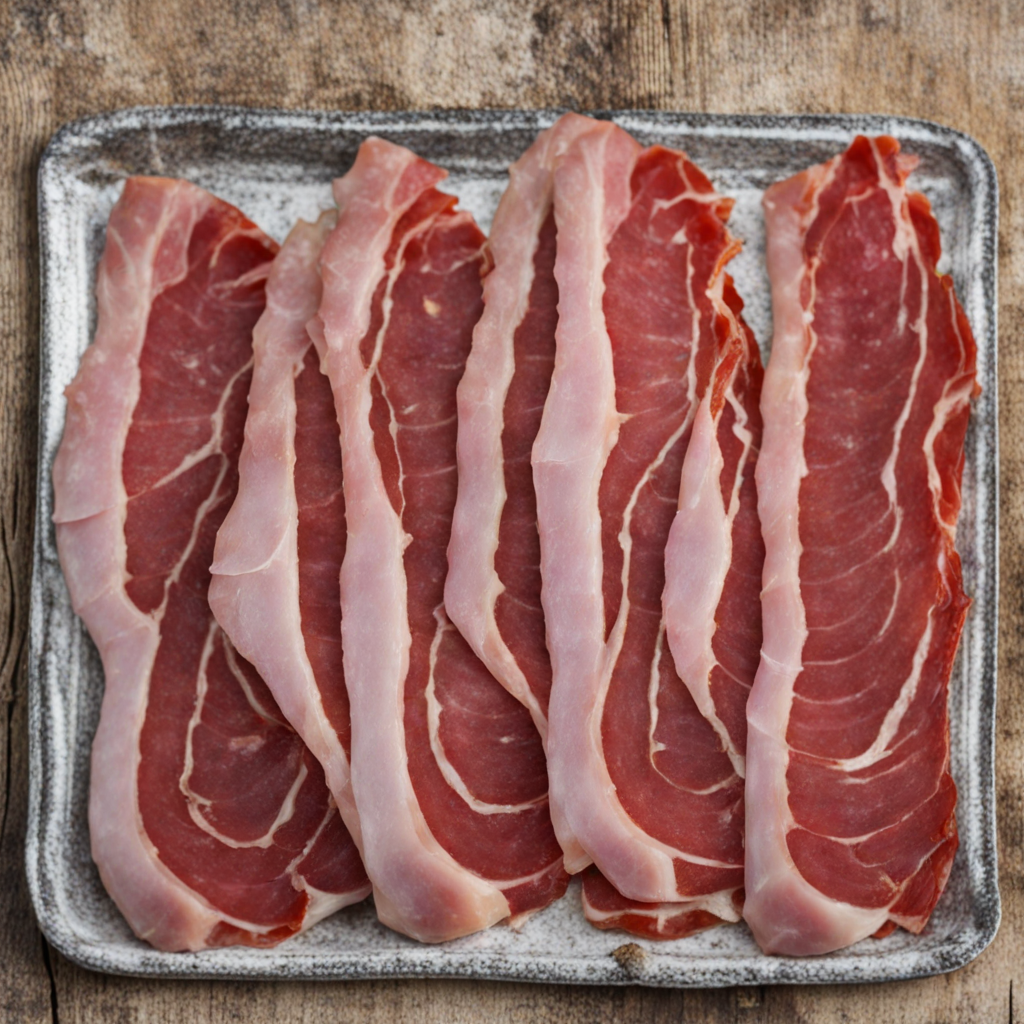Mekitsa
Mekitsa is a delightful Bulgarian treat that captivates the senses with its golden-brown exterior and fluffy interior. This traditional fried dough delicacy is often enjoyed as a breakfast item or a snack, offering a unique blend of textures and flavors. The dough is typically made from simple ingredients like flour, water, and yogurt, which contribute to its light and airy consistency. Once fried, Mekitsa develops a crispy crust that gives way to a soft, pillowy center, making each bite an exquisite experience for the palate. Often, Mekitsa is served warm, dusted with powdered sugar or accompanied by local favorites such as honey, jam, or yogurt. The subtle tang from the yogurt in the dough complements the sweetness of the toppings, creating a harmonious balance that enhances the overall taste. Some variations may include added flavors like vanilla or lemon zest, which infuse a refreshing twist into this classic dish, inviting food lovers to explore its versatility. The enjoyment of Mekitsa goes beyond just taste; it is deeply rooted in Bulgarian culture and often shared among family and friends. Whether enjoyed at a bustling street market or prepared at home, Mekitsa embodies the spirit of community and togetherness. This irresistible snack not only satisfies hunger but also offers a glimpse into the rich culinary heritage of Bulgaria, making it a must-try for anyone seeking new and exciting flavors.
How It Became This Dish
## The History of Мекица: Bulgaria's Beloved Fried Dough Origin and Etymology The Мекица (pronounced 'mekitsa') is a traditional Bulgarian fried dough delicacy that has captured the hearts and taste buds of many. Its name derives from the Bulgarian word "мек" (mek), meaning "soft," which perfectly describes the texture of this delectable treat. While the exact origins are somewhat elusive, it's widely believed that Мекица has roots in both the Byzantine and Ottoman culinary traditions, reflecting the complex history of the Balkan region. The preparation of Мекица is an age-old practice that has been passed down through generations, often associated with daily life and special occasions. Its simplicity and versatility have allowed it to endure, adapting to the changing tastes and practices of Bulgarian culture over the centuries. Cultural Significance In Bulgaria, food is intricately woven into the fabric of cultural identity and social interaction. Мекица holds a special place in the hearts of Bulgarians, often enjoyed at breakfast or as a snack throughout the day. Traditionally, it is served with a variety of toppings such as powdered sugar, honey, jam, or cheese, making it a versatile dish that can satisfy both sweet and savory cravings. The Мекица is not just a food item; it also carries cultural significance tied to family and community. Preparing and sharing this dish often brings people together, whether during morning gatherings or festive occasions. It is common for families to have their own recipes, passed down from grandmother to mother, creating a personal connection to the dish that transcends generations. Preparation and Ingredients Making Мекица is a straightforward process, typically involving a few basic ingredients: flour, water, yeast, and salt. Some variations may include milk or yogurt to enrich the dough, while others may add eggs or baking powder for additional fluffiness. The dough is mixed, left to rise, and then shaped into flat disks before being fried in hot oil until golden brown and crispy on the outside while remaining soft and airy on the inside. The preparation method can vary by region and family tradition. Some people prefer to roll out the dough thinly, while others opt for a thicker version. The frying technique also varies; some may deep-fry the Мекица for a more indulgent texture, while others may pan-fry them for a lighter result. This adaptability speaks to the dish’s enduring popularity and its ability to evolve with the tastes of its makers. Historical Development The history of Мекица is deeply intertwined with the broader narrative of Bulgarian cuisine, which has been shaped by a myriad of influences over the centuries. The Balkan region has seen the rise and fall of various empires, including the Roman, Byzantine, and Ottoman Empires, each leaving their mark on culinary traditions. During the Ottoman period, many Balkan countries, including Bulgaria, experienced significant cultural exchange. The Turkish influence is evident in the preparation of fried dough, leading to the development of various similar dishes across the region. In this context, Мекица can be seen as a Bulgarian adaptation of a broader tradition of frying dough, akin to the Turkish "simit" or the Greek "loukoum." As Bulgaria entered the 20th century, Мекица began to gain prominence beyond its humble origins. The dish became a staple in Bulgarian households, often associated with rural life and the agrarian calendar. It is particularly popular during the winter months when hearty, fried foods were sought after for warmth and sustenance. Modern Variations and Adaptations In contemporary Bulgaria, Мекица continues to be a beloved dish, transcending its traditional roots. While it remains a staple breakfast item, it has also found its way into modern cafes and restaurants, often reinterpreted through innovative culinary lenses. Chefs experiment with fillings and toppings, introducing modern flavors such as chocolate, fruit compotes, and gourmet cheeses. The rise of globalization has also impacted Мекица, as the dish has begun to appear in diaspora communities around the world. Bulgarian émigrés have carried their culinary traditions with them, sharing the joy of Мекица with new audiences. This has led to a renewed interest in the dish, as non-Bulgarians discover its unique flavor and texture. The Role of Festivals and Celebrations In Bulgaria, Мекица is often featured in festivals and celebrations, particularly those that celebrate traditional cuisine and folklore. Events like the “Festival of Bulgarian Cuisine” showcase Мекица alongside other traditional dishes, highlighting its cultural significance. During these occasions, visitors can witness live cooking demonstrations, participate in workshops, and taste various regional interpretations of the beloved fried dough. Moreover, special occasions such as weddings, family gatherings, and holidays often see Мекица as a beloved treat. For instance, during Christmas and Easter, families may prepare larger batches to share with friends and relatives, reinforcing the communal aspect of food in Bulgarian culture. Conclusion The Мекица is more than just a simple fried dough; it is a dish rich in history, culture, and personal significance. From its origins in ancient culinary traditions to its place in modern Bulgarian cuisine, Мекица embodies the spirit of adaptability and resilience. It serves as a delicious reminder of the connections between food, family, and community, making it a cherished item on tables across Bulgaria and beyond. As the culinary landscape continues to evolve, the未来 of Мекица remains bright, with each generation finding new ways to celebrate this traditional dish while honoring its time-honored roots. Whether enjoyed in a cozy kitchen or at a bustling festival, Мекица will undoubtedly continue to hold a special place in the hearts of Bulgarians and food lovers around the world.
You may like
Discover local flavors from Bulgaria







